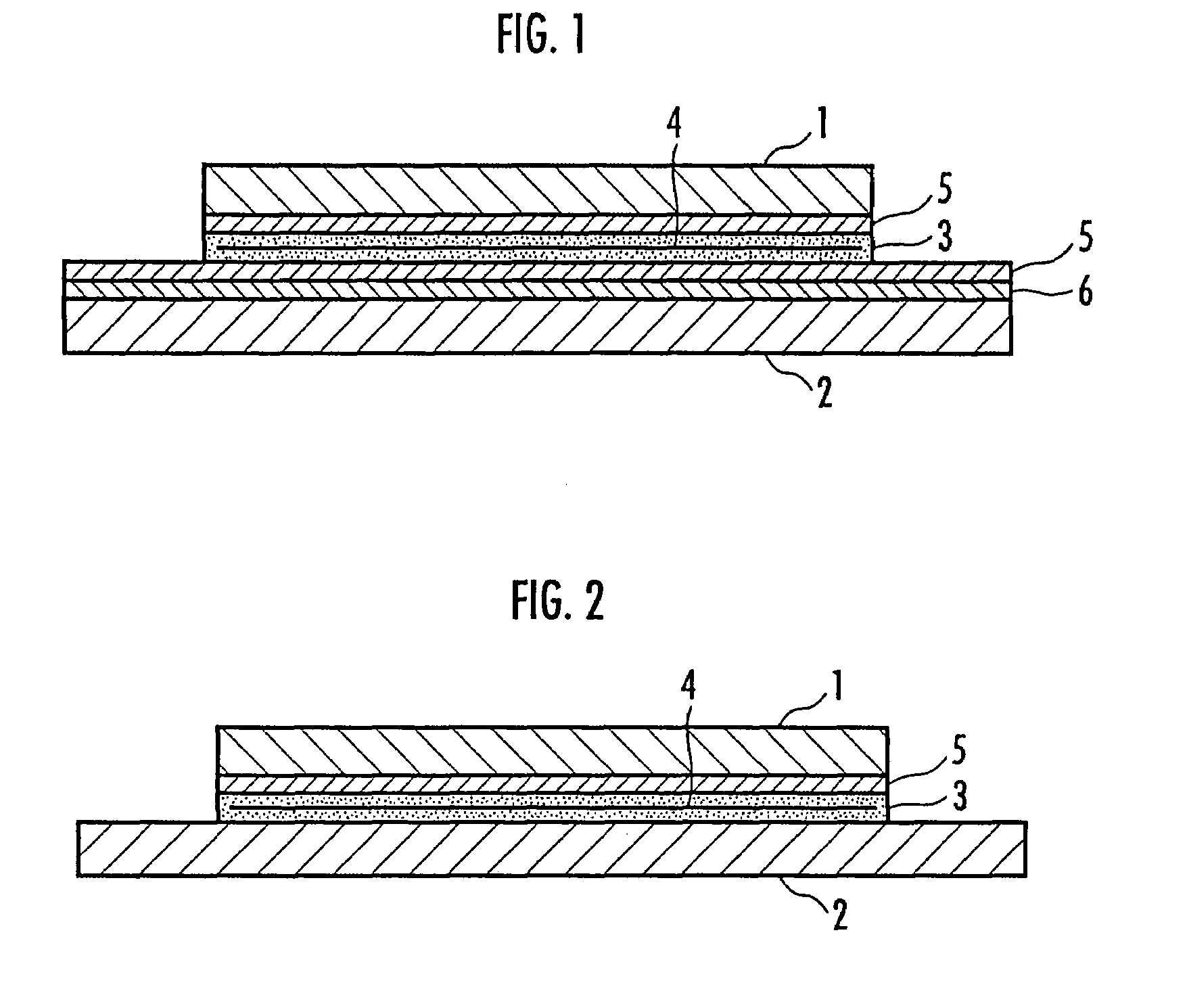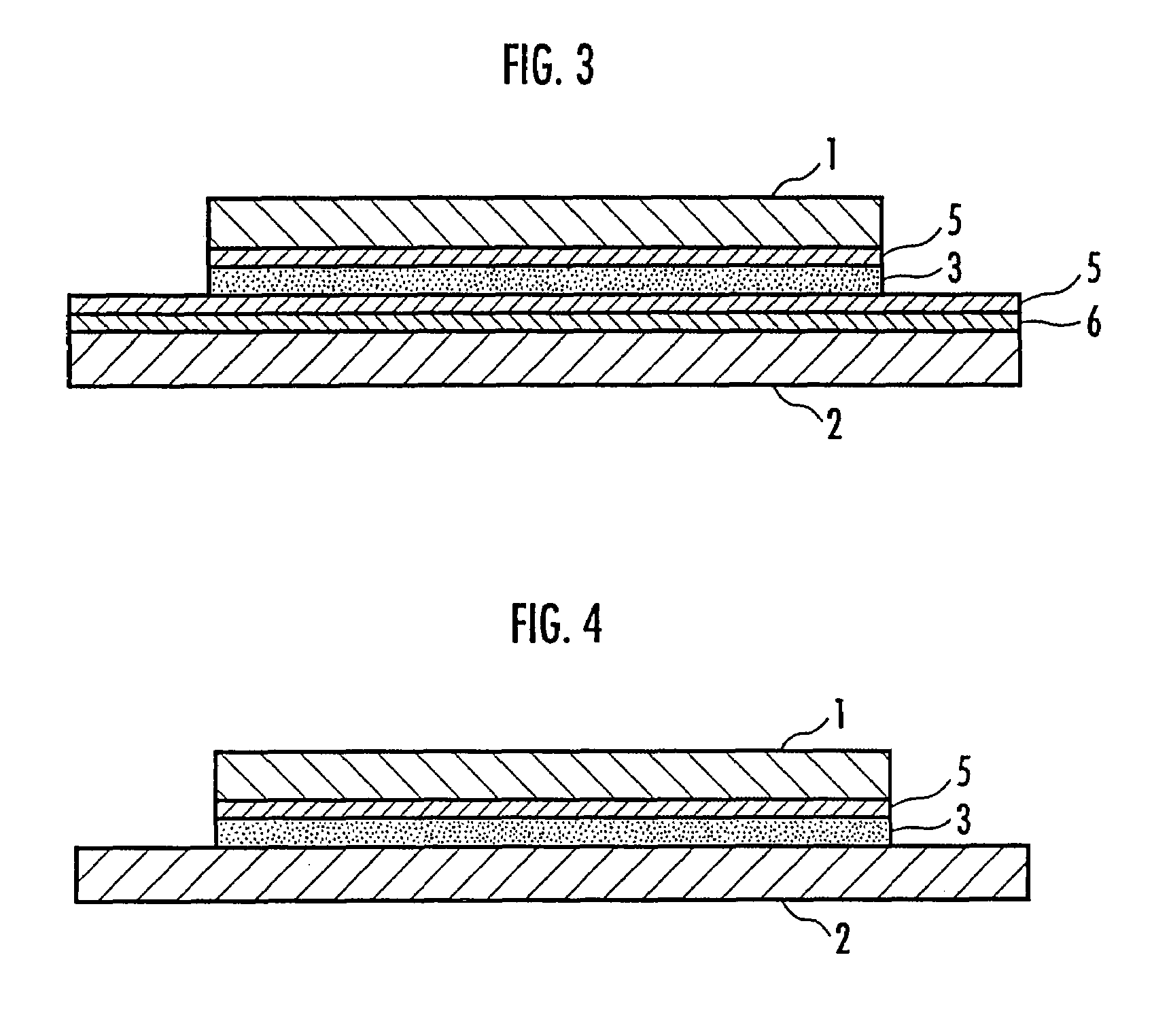Method of joining members having different thermal expansion coefficients
a technology of thermal expansion coefficient and joining member, which is applied in the direction of manufacturing tools, non-electric welding apparatus, and welding apparatus, etc., can solve the problems of insufficient durability of the joining layer and the fragil and achieve the effects of reducing heating, reducing stress, and rigidity of the joining layer
- Summary
- Abstract
- Description
- Claims
- Application Information
AI Technical Summary
Benefits of technology
Problems solved by technology
Method used
Image
Examples
example 1
[0045]In this Example, Ag particles having an average particle diameter of 15 nm were prepared as the wax material 3. The Ag particles were coated with octadecanediol. The heat resistance temperature of the coating was about 220° C. Furthermore, an Ag foil having a thickness of 100 μm was prepared as the metal foil 4. Note that the modulus of longitudinal elasticity of Ag at room temperature is 82.7 GPa.
[0046]Subsequently, an Si chip of 10 mm×10 mm was prepared as the member 1 to be joined. The Si chip serving as the member 1 has the Ag coating layer 5 having a thickness of 50 nm and formed on a surface by vapor deposition, as shown in FIG. 1.
[0047]As the member 2 to be joined, an Al board of 20 mm×20 mm×5 mm was prepared. The Al board serving as the member 2 is formed of a material of Al050 board and has the Ni plating layer 6 on its surface, as shown in FIG. 1 and the Ag coating layer 5 of 120 nm in thickness is provided by vapor deposition on the Ni plating layer 6.
[0048]Note tha...
example 2
[0051]In this Example, the member (Si chip) 1 and the member (Al board) 2 were joined in substantially the same manner as in Example 1 except that an Ag coating layer (not shown), which was formed by vapor deposition on the surface of an Al foil of 100 μm in thickness, was used as the metal foil 4 in place of the Ag foil used in Example 1. Note that the modulus of longitudinal elasticity of Al at room temperature is 70.6 GPa, which is smaller than that (82.7 GPa) of Ag.
[0052]The members 1 and 2 thus joined were then subjected to the thermal cycle test in substantially the same manner as in Example 1 to evaluate durability to the thermal cycle. The results are shown in Table 1.
example 3
[0053]In this Example, the member (Si chip) 1 and the member (Al board) 2 were joined in substantially the same manner as in Example 1 except that an Ag coating layer (not shown), which was formed by vapor deposition on the surface of an Au foil of 100 μm in thickness, was used as the metal foil 4 in place of the Ag foil used in Example 1. Note that the modulus of longitudinal elasticity of Au at room temperature is 78.5 GPa, which is smaller than that (82.7 GPa) of Ag.
[0054]The members 1 and 2 thus joined were then subjected to the thermal cycle test in substantially the same manner as in Example 1 to evaluate durability to the thermal cycle. The results are shown in Table 1.
PUM
| Property | Measurement | Unit |
|---|---|---|
| average particle diameter | aaaaa | aaaaa |
| particle diameter | aaaaa | aaaaa |
| thickness | aaaaa | aaaaa |
Abstract
Description
Claims
Application Information
 Login to View More
Login to View More - R&D
- Intellectual Property
- Life Sciences
- Materials
- Tech Scout
- Unparalleled Data Quality
- Higher Quality Content
- 60% Fewer Hallucinations
Browse by: Latest US Patents, China's latest patents, Technical Efficacy Thesaurus, Application Domain, Technology Topic, Popular Technical Reports.
© 2025 PatSnap. All rights reserved.Legal|Privacy policy|Modern Slavery Act Transparency Statement|Sitemap|About US| Contact US: help@patsnap.com



